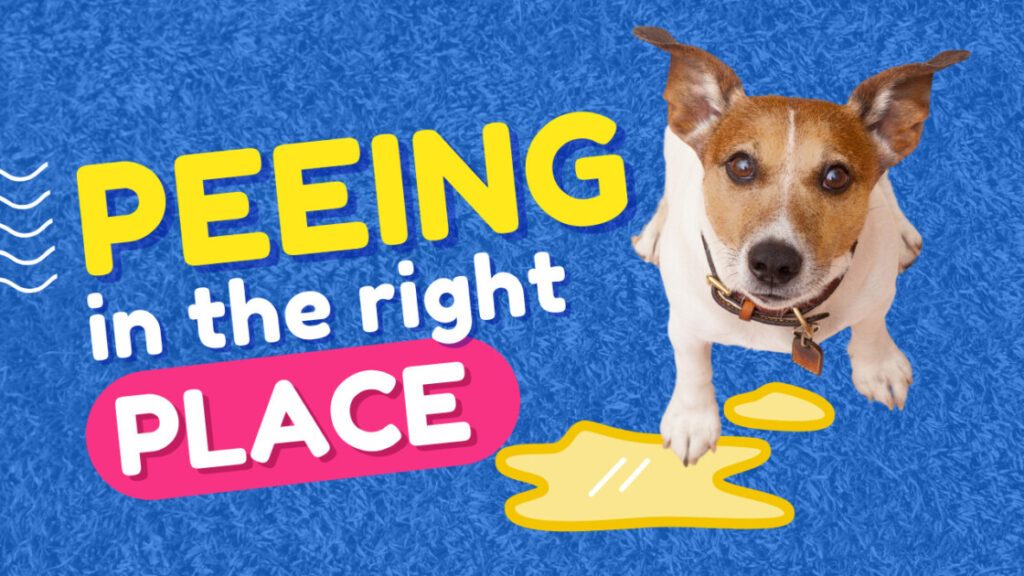Ah, the joys of puppyhood! Full of boundless energy and endless cuddles, but also, let’s be honest, the occasional puddle. Potty training can be challenging, but with patience, consistency, and a little understanding, you can guide your furry friend to become a house-trained superstar.

Understanding Your Puppy’s Needs
Before we dive into training, let’s understand a puppy’s bladder capacity. Just like a human baby, puppies have limited control over their bladder and bowel movements. Their bodies are still developing, and their muscles aren’t strong enough to hold them for extended periods. This is why frequent potty breaks are essential.
Creating a Potty Training Schedule
Establishing a consistent potty schedule is crucial. Here’s a basic guideline:
- Wake-up Calls: Immediately take your puppy outside upon waking up.
- After Meals: Puppies often need to relieve themselves within 15-20 minutes after eating.
- Playtime Breaks: After periods of play, take your puppy outside to avoid accidents.
- Before Bedtime: A final potty break before settling in for the night is essential.
Choosing the Right Spot: Outdoor or Indoor Relief?
While outdoor potty training is ideal, there might be times when indoor potty training is necessary.
- Outdoor Potty Training: Choose a specific spot in your yard and consistently take your puppy there. Use positive reinforcement to associate the spot with potty time.
- Indoor Potty Training: For puppies or during inclement weather, consider using puppy pads or a designated potty area indoors. However, outdoor training remains the ultimate goal.
Positive Reinforcement: Rewarding Good Behavior
Positive reinforcement is the key to successful potty training. Here’s how to make it work:
- Catch Them in the Act: When your puppy successfully eliminates in the designated area, shower them with praise and treats.
- Consistency is Key: Consistent rewards reinforce the desired behavior.
- Avoid Punishment: Punishing accidents can create fear and anxiety, hindering the training process.
Handling Accidents: Staying Calm and Consistent
Accidents are a normal part of potty training. Here’s how to handle them:
- Clean Up Efficiently: Use an enzymatic cleaner to remove odor and prevent future accidents in the same spot.
- Avoid Punishment: Scolding your puppy won’t help. Instead, focus on preventing future accidents through consistent potty breaks and positive reinforcement.
Indoor Potty Training Tips: Using Puppy Pads Effectively
If indoor potty training is necessary, here are some tips:
- Consistent Placement: Place the puppy pad in a designated area and consistently take your puppy there.
- Positive Reinforcement: Reward your puppy with treats and praise when they use the puppy pad.
- Gradual Reduction: As your puppy gets older, gradually reduce the number of puppy pads until you can eliminate them altogether.
Overcoming Potty Training Challenges
Potty training can be challenging, but with patience and consistency, you can overcome common obstacles:
- Chewing on Accidents: This is a common behavior. Clean up accidents thoroughly and provide your puppy with plenty of chew toys.
- Marking Territory: If your puppy is marking, consider neutering or spaying. Consult your vet for further guidance.
- Nighttime Accidents: Increase the frequency of potty breaks before bedtime and create a quiet sleep environment.
The Power of Patience and Consistency
Potty training requires time and patience. Celebrate small victories and don’t get discouraged by setbacks. Remember, every puppy is different, so adjust your training methods as needed. With love, consistency, and positive reinforcement, you’ll successfully guide your furry friend to become a house-trained superstar!
Would you like to explore specific potty training techniques for different dog breeds or ages?
The Spruce Pets: Provides practical advice on potty training methods, troubleshooting common issues, and creating a positive training environment.
FAQ: Potty Training Perfection: Teaching Your Puppy to Pee in the Right Place
1. How often should I take my puppy outside to potty?
The frequency of potty breaks depends on your puppy’s age. As a general rule, take them out every hour for puppies under 12 weeks, gradually increasing the intervals as they get older.
2. What if my puppy has accidents indoors?
Accidents happen! Clean up the mess thoroughly using an enzymatic cleaner. Avoid punishing your puppy, as it can hinder the training process. Focus on positive reinforcement when they go potty in the right place.
3. How long does potty training typically take?
Potty training can take several weeks or even months. Consistency and patience are key. Every puppy is different, so don’t get discouraged if it takes longer than expected.
4. Can I use puppy pads forever?
While puppy pads can be helpful during the initial training stages, the goal is to transition your puppy to outdoor pottying. Gradually reduce the number of puppy pads until you can eliminate them altogether.
5. My puppy seems to have forgotten how to go potty outside after using puppy pads. What can I do?
Reintroduce your puppy to the outdoor potty spot and use positive reinforcement to re-establish the association. It might take some time, but consistency is key.
6. What if my puppy is marking territory instead of peeing?
Marking territory is often a sign of anxiety or insecurity. Consider neutering or spaying your puppy, and consult with a professional dog trainer for behavior modification techniques.
7. My puppy is afraid to go potty outside. What can I do?
Create a positive association with the outdoors by offering treats and praise when your puppy goes potty outside. Gradually introduce them to different outdoor environments to reduce anxiety.
8. What if my puppy has accidents at night?
Limit water intake before bedtime, create a quiet sleep environment, and take your puppy out for a final potty break before going to bed. If accidents persist, consult your veterinarian to rule out any medical issues.
Remember, potty training requires patience, consistency, and positive reinforcement. Celebrate your puppy’s successes and don’t get discouraged by setbacks. With time and effort, you’ll achieve potty training perfection!